|
Books Should Be Free Loyal Books Free Public Domain Audiobooks & eBook Downloads |
|
|
Books Should Be Free Loyal Books Free Public Domain Audiobooks & eBook Downloads |
|
Non-fiction |
|---|
|
Book type:
Sort by:
View by:
|
By: Various | |
|---|---|
 Harper's Young People, Vol. 01, Issue 01, Nov. 4, 1879
Harper's Young People, Vol. 01, Issue 01, Nov. 4, 1879
Harper's Young People upon its first publication in 1879 was an illustrated weekly publication containing delightful serialized stories, short stories,fiction and nonfiction, anecdotes, jokes, artwork, and more for children. Published by Harper & Brothers, known for their other publications Harper's Bazaar and Harper's Magazine. | |
By: Walter Lippmann (1889-1974) | |
|---|---|
 Public Opinion
Public Opinion
Public Opinion (1922), by Walter Lippman, is a critical assessment of functional democratic government, especially the irrational, and often self-serving, social perceptions that influence individual behavior, and prevent optimal societal cohesion. (Introduction by author) | |
By: William Wood (1864-1947) | |
|---|---|
 Chronicles of Canada Volume 31 - All Afloat: A Chronicle of Craft and Waterways
Chronicles of Canada Volume 31 - All Afloat: A Chronicle of Craft and Waterways
No exhaustive Canadian 'water history' can possibly be attempted here. That would require a series of its own. But at least a first attempt will be made to give some general idea of what such a history would contain in fuller detail: of the kayaks and canoes the Eskimos and Indians used before the white man came, and use today; of the small craft moved by oar and sail that slowly displaced those moved only by the paddle; of the sailing vessels proper, and how they plied along Canadian waterways,... | |
By: A. A. (Arthur Alger) Crozier (1856-1899) | |
|---|---|
 The Cauliflower
The Cauliflower
| |
By: A. Alpheus | |
|---|---|
 Complete Hypnotism, Mesmerism, Mind-Reading and Spiritualism
Complete Hypnotism, Mesmerism, Mind-Reading and Spiritualism
Written in 1903, just sixty years after the word ‘hypnotism’ was coined, this book explores the contemporary understanding of the nature, uses and dangers of the technique. Hypnotism has been practiced for many centuries, but it was in the mid-to-late nineteenth century that it became a particularly fashionable way to explore the human mind. Although understanding of the subject has evolved considerably over subsequent years, this book remains a fascinating insight into a technique once thought to be at the forefront of medical science. | |
By: A. Hyatt (Alpheus Hyatt) Verrill (1871-1954) | |
|---|---|
 Knots, Splices and Rope Work A Practical Treatise
Knots, Splices and Rope Work A Practical Treatise
| |
By: A. Mouritz (1861-1943) | |
|---|---|
 “The Flu”: A Brief History of Influenza in U. S. America, Europe, Hawaii
“The Flu”: A Brief History of Influenza in U. S. America, Europe, Hawaii
PREFACE This Booklet has been written and compiled for the use of any student or layman who seeks concise and clear information on the history of Influenza. Brief and salient facts are set forth relating to “Flu” epidemics and pandemics: other collateral features have also been discussed, connected with or bearing upon this subject. Honolulu, Hawaii, U. S. A., 1921. - A. Mouritz Notes: Much of the material in "The Flu" is still relevant today, like pandemic terminology, thoughts about causes and micro-organisms, the flu's relationship with pneumonia, the impact on society, and approaches to treatments "The Flu" is included in the Surgeon General's Library at the U... | |
By: A. W. Duncan | |
|---|---|
 The Chemistry of Food and Nutrition
The Chemistry of Food and Nutrition
| |
By: A. W. [Editor] Latham | |
|---|---|
 Trees, Fruits and Flowers of Minnesota, 1916Embracing the Transactions of the Minnesota State Horticultural Society,Volume 44, from December 1, 1915
Trees, Fruits and Flowers of Minnesota, 1916Embracing the Transactions of the Minnesota State Horticultural Society,Volume 44, from December 1, 1915
| |
By: Abner Cheney Goodell (1831-1914) | |
|---|---|
 The Trial and Execution, for Petit Treason, of Mark and Phillis, Slaves of Capt. John Codman
The Trial and Execution, for Petit Treason, of Mark and Phillis, Slaves of Capt. John Codman
| |
By: Abner Doubleday (1819-1893) | |
|---|---|
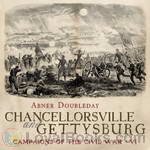 Chancellorsville and Gettysburg
Chancellorsville and Gettysburg
Abner Doubleday began the Civil War as a Union officer and aimed the first cannon shot in response to the bombardment opened on Ft. Sumter in 1861. Two years later, after a series of battles (including Antietam, where he was wounded), Doubleday took over a division in the Army of the Potomac's 1st Corps.These are his memoirs of service in two of the War's great campaigns. At Chancellorsville, a very promising start made by General Hooker against Lee's Confederate forces fell to a defeat when, in... | |
By: Abraham Lincoln (1809-1865) | |
|---|---|
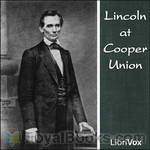 Lincoln at Cooper Union
Lincoln at Cooper Union
On 27 February 1860, Abraham Lincoln gave this address at the Cooper Union in New York City. When he gave the speech, Lincoln was considered by many to be just a country lawyer. After he gave the speech, he soon became his party’s nominee for president. | |
By: Abraham Tomlinson | |
|---|---|
 The Military Journals of Two Private Soldiers, 1758-1775
The Military Journals of Two Private Soldiers, 1758-1775
“Perceiving that much of the intrinsic value of these Journals would consist in a proper understanding of the historical facts to which allusions are made in them, I prevailed upon Mr. Lossing, the well-known author of the “Pictorial Field-Book of the Revolution” to illustrate and elucidate these diaries by explanatory notes. His name is a sufficient guaranty for their accuracy and general usefulness” | |
By: Ada Barnett | |
|---|---|
 Man On The Other Side
Man On The Other Side
Ruth never expected to have a house of her own. Raised in an orphanage, she is forced to work for her living. She chooses to work in a book store, until the Great War. She serves in France and then marries. But what would she do with power? Would she be contented to settle down as a happy country wife? How would her husband take their very different backgrounds? - Summary by Stav Nisser | |
By: Adam S. (Adam Samuel) Bennion (1886-1958) | |
|---|---|
 Principles of Teaching
Principles of Teaching
| |
By: Adam Smith (1723-1790) | |
|---|---|
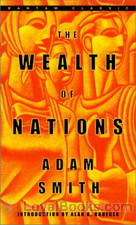 The Wealth of Nations
The Wealth of Nations
Adam Smith’s “The Wealth of Nations” gives an in-depth discussion of different economic principles like the productivity, division of labor and free markets. Although written and published more than 200 years ago, it’s still hailed as one of the most original works in the field of economics and is still used as a reference by many modern economists. “An Inquiry Into the Nature and Causes of the Wealth of Nations” is the complete title of this book and it was first published in 1776, the same year that the American colonies declared their independence from Britain... | |
By: Adelaide Hoodless (1858-1910) | |
|---|---|
 Public School Domestic Science
Public School Domestic Science
| |
By: Adelia Belle Beard and Lina Beard | |
|---|---|
 On the Trail
On the Trail
On The Trail, An Outdoor Book For GirlsBy Lina Beard And Adelia Belle BeardPRESENTATION The joyous, exhilarating call of the wilderness and the forest camp is surely and steadily penetrating through the barriers of brick, stone, and concrete; through the more or less artificial life of town and city; and the American girl is listening eagerly. It is awakening in her longings for free, wholesome, and adventurous outdoor life, for the innocent delights of nature-loving Thoreau and bird-loving Burroughs... | |
By: Adoniram Judson Ladd | |
|---|---|
 On the Firing Line in Education
On the Firing Line in Education
| |
By: Agnes Ethel Conway (1885-1950) | |
|---|---|
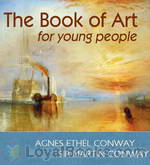 The Book of Art for Young People
The Book of Art for Young People
This is a charming book on Art History for children (and everyone else). Each chapter focuses on a great painting, reproduced in color in the original text. The authors explain the story behind the paintings, as well as the life, times, and techniques of the artists. | |
By: Agnes Repplier (1855-1950) | |
|---|---|
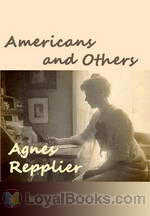 Americans and Others
Americans and Others
A collection of sometimes biting, always clever commentaries on some of life's foibles -- as apt today as when Ms. Repplier wrote them in 1912. Though less know to modern readers, Repplier was in her prime ranked among the likes of Willa Cather. Note: Section 13 contains the word niggards. I put it in print here so that it will not be mistaken for a racial epithet when heard. (written by Mary Schneider) | |
By: Aiden Wilson Tozer (1897-1963) | |
|---|---|
 The Pursuit of God
The Pursuit of God
"As the heart panteth after the water brooks, so panteth my soul after thee, O God." This thirst for an intimate relationship with God, claims A.W. Tozer, is not for a select few, but should be the experience of every follower of Christ. But, he asserts, it is all too rare when believers have become conditioned by tradition to accept standards of mediocrity, and the church struggles with formality and worldliness. Using examples from Scripture and from the lives of saints who lived with this thirst for God, Tozer sheds light on the path to a closer walk with God. | |
By: Alan [Editor] Story | |
|---|---|
 The Copy/South Dossier Issues in the economics, politics, and ideology of copyright in the global South
The Copy/South Dossier Issues in the economics, politics, and ideology of copyright in the global South
| |
By: Albert Bigelow Pain | |
|---|---|
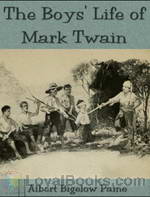 The Boys' Life of Mark Twain
The Boys' Life of Mark Twain
Albert Bigelow Paine was Samuel Langhorne Clemens’ (Mark Twain’s) biographer. He lived with Twain, collecting ideas and material for a biography, for a few years before Twain’s death in 1910. Six years later Paine published this “story of a man who made the world laugh and love him.” For those who have read or listened to Mark Twain’s works, Paine’s work is an invaluable resource to better understand Twain, the stories behind his stories and his life with those he loved and with whom he worked. | |
By: Albert Einstein (1879-1955) | |
|---|---|
 Relativity: The Special and General Theory
Relativity: The Special and General Theory
Einstein wrote this book for people who are interested in understanding the Theory of Relativity but aren't experts in scientific and mathematical principles. I'm sure many people have heard about Einstein's Theory of Relativity, but most of them don't really know what it is all about. This book gives them a chance to know more about this very famous theory without the need to take a Physics course first. This book is divided into three parts. The first part explains what special relativity is all about... | |
 Sidelights on Relativity
Sidelights on Relativity
Sidelights on Relativity contains ETHER AND THE THEORY OF RELATIVITY, an address delivered on May 5th, 1920, in the University of Leyden; and GEOMETRY AND EXPERIENCE, an expanded form of an address to the Prussian Academy of Sciences in Berlin on January 27th, 1921. (Intro from Project Gutenberg) | |
By: Albert H. Benson | |
|---|---|
 Fruits of Queensland
Fruits of Queensland
| |
By: Albertus Magnus (1193-1280) | |
|---|---|
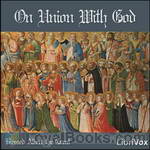 On Union With God
On Union With God
Surely the most deeply-rooted need of the human soul, its purest aspiration, is for the closest possible union with God. As one turns over the pages of this little work, written by Blessed Albert the Great towards the end of his life, when that great soul had ripened and matured, one feels that here indeed is the ideal of one's hopes. (From the Preface) | |
By: Alexander Aaronsohn (1888-1948) | |
|---|---|
 With the Turks in Palestine
With the Turks in Palestine
While Belgium is bleeding and hoping, while Poland suffers and dreams of liberation, while Serbia is waiting for redemption, there is a little country the soul of which is torn to pieces—a little country that is so remote, so remote that her ardent sighs cannot be heard.It is the country of perpetual sacrifice, the country that saw Abraham build the altar upon which he was ready to immolate his only son, the country that Moses saw from a distance, stretching in beauty and loveliness,—a land of promise never to be attained,—the country that gave the world its symbols of soul and spirit... | |
By: Alexander Darroch (1863-1910) | |
|---|---|
 The Children: Some Educational Problems
The Children: Some Educational Problems
| |
By: Alexander Hamilton (1755/1757-1804) | |
|---|---|
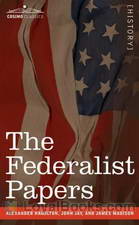 The Federalist Papers
The Federalist Papers
In order to promote the ratification of the United States Constitution in the late 1780s, Alexander Hamilton, James Madison and John Hay wrote a series of 85 articles and essays explaining their reasons to support the constitution. Most of these articles were published in The Independent Journal and The New York Packet and they later became known as “The Federalist Papers.” In reading the articles, one will encounter very interesting issues like Hamilton’s opposition to including the Bill of Rights in the Constitution and why he thinks a Union is better than a Confederation... | |
By: Alexander Kinglake | |
|---|---|
 Eothen, or Impressions of Travel brought Home from the East
Eothen, or Impressions of Travel brought Home from the East
A classic of Victorian travel writing, Kinglake’s book describes his journey through the Ottoman empire to Cairo, and his residence there in time of plague. | |